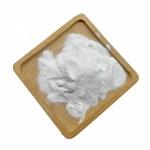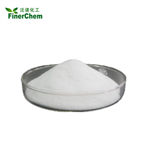Kojic Acid Dipalmitate: A Versatile Skin Lightening Agent in the Cosmetic Industry
Sep 3,2024
Introduction
Kojic acid dipalmitate is an esterified derivative of kojic acid, a well-known skin-lightening agent commonly used in the cosmetic industry. With its enhanced stability and efficacy compared to kojic acid, kojic acid dipalmitate has gained significant attention among chemists and cosmetic formulators. Its effectiveness in inhibiting melanin production makes it a popular ingredient in skin-lightening and brightening products.

Figure 1 Characteristics of Kojic acid dipalmitate
Properties of Kojic Acid Dipalmitate
Kojic acid dipalmitate (C38H66O6) is a lipophilic compound formed by the esterification of kojic acid with palmitic acid. Unlike its parent compound, kojic acid, which is water-soluble, kojic acid dipalmitate exhibits increased solubility in oils and organic solvents, making it more suitable for use in oil-based formulations. This modification also imparts greater stability to the molecule, protecting it from degradation caused by exposure to light, heat, and oxygen, which are common challenges faced by kojic acid in cosmetic formulations.
The molecular weight of kojic acid dipalmitate is approximately 618.9 g/mol. It appears as an off-white powder with a melting point ranging from 92°C to 96°C. The compound is stable at a pH of 4.0-6.0, which makes it compatible with a wide range of cosmetic formulations. In addition, it exhibits excellent compatibility with other active ingredients, including vitamins, peptides, and antioxidants, which enhances its versatility in skin care formulations.
One of the key properties of kojic acid dipalmitate is its ability to inhibit tyrosinase, the enzyme responsible for melanin production in the skin. By blocking this enzyme, kojic acid dipalmitate reduces hyperpigmentation and helps in achieving a more even skin tone. Unlike kojic acid, kojic acid dipalmitate does not cause the same level of irritation or sensitivity, making it a more favorable choice for consumers with sensitive skin.
Main Components of Kojic Acid Dipalmitate
The primary components of kojic acid dipalmitate are kojic acid and palmitic acid. Kojic acid, a natural byproduct of certain fungal species, is traditionally known for its skin-lightening properties. It is obtained from the fermentation of carbohydrates such as glucose and is commonly used in food and cosmetic products.
Palmitic acid, on the other hand, is a saturated fatty acid commonly found in palm oil, butter, and other fats. It plays a crucial role in the esterification process, imparting lipophilic properties to kojic acid dipalmitate. The combination of these two molecules through esterification results in a compound that maintains the skin-lightening effects of kojic acid while enhancing its stability and compatibility in cosmetic formulations.
The esterification process involves the reaction of kojic acid with palmitic acid in the presence of a catalyst, resulting in the formation of kojic acid dipalmitate. This reaction not only improves the solubility of the compound in oils but also reduces its susceptibility to oxidation and degradation.
Applications of Kojic Acid Dipalmitate
Kojic acid dipalmitate is widely used in the cosmetic industry, primarily in products targeting skin lightening, brightening, and anti-aging. Its ability to inhibit melanin production makes it a key ingredient in formulations designed to treat hyperpigmentation issues, such as dark spots, melasma, and post-inflammatory hyperpigmentation. Products containing kojic acid dipalmitate are often marketed as effective solutions for achieving a more even and radiant complexion.
In addition to its skin-lightening properties, kojic acid dipalmitate also exhibits antioxidant properties. This makes it a valuable addition to anti-aging products, where it helps to neutralize free radicals and protect the skin from oxidative stress. Its ability to work synergistically with other active ingredients, such as retinoids, peptides, and vitamins, further enhances its efficacy in comprehensive skin care formulations.
Kojic acid dipalmitate is also used in sunscreen formulations due to its ability to reduce UV-induced pigmentation. By inhibiting tyrosinase, it helps to prevent the formation of sunspots and other forms of UV-related hyperpigmentation. This makes it a valuable ingredient in products designed to protect the skin from the harmful effects of UV radiation.
In recent years, the demand for natural and effective skin-lightening agents has led to a growing interest in kojic acid dipalmitate as an alternative to hydroquinone, a controversial ingredient known for its potential side effects. Kojic acid dipalmitate offers a safer and more stable option, making it a preferred choice for consumers and formulators alike.
Storage and Handling of Kojic Acid Dipalmitate
Proper storage and handling of kojic acid dipalmitate are essential to maintaining its stability and efficacy. As with many cosmetic ingredients, kojic acid dipalmitate should be stored in a cool, dry place, away from direct sunlight, heat, and moisture. Exposure to these elements can lead to degradation, reducing the effectiveness of the compound in cosmetic formulations.
It is recommended to store kojic acid dipalmitate in tightly sealed containers to prevent exposure to air and humidity. The ideal storage temperature is between 15°C and 25°C. Under these conditions, the compound can remain stable for up to two years. However, once incorporated into a formulation, the stability of kojic acid dipalmitate may vary depending on the other ingredients used and the overall formulation process.
When handling kojic acid dipalmitate in a laboratory or manufacturing setting, it is important to use appropriate personal protective equipment (PPE), including gloves, goggles, and lab coats, to prevent accidental contact with the skin or eyes. While kojic acid dipalmitate is generally considered safe for use in cosmetic formulations, direct contact with the raw material may irritate, especially in sensitive individuals.
Conclusion
Kojic acid dipalmitate is a versatile and stable skin-lightening agent that has become a staple in the cosmetic industry. Its enhanced stability, lipophilicity, and compatibility with other active ingredients make it a valuable addition to a wide range of skincare products. By inhibiting tyrosinase and reducing melanin production, kojic acid dipalmitate helps to address hyperpigmentation issues and promotes a more even skin tone.
For chemists and formulators in the cosmetic industry, understanding the properties, composition, and applications of kojic acid dipalmitate is essential for developing effective and innovative skin care products. With proper storage and handling, this compound can offer long-lasting benefits and contribute to the ongoing demand for safe and effective skin-lightening solutions.
![]() Reference
Reference
[1] Ayuhastuti A, Syah I S K, Megantara S, et al. Nanotechnology-Enhanced Cosmetic Application of Kojic Acid Dipalmitate, a Kojic Acid Derivate with Improved Properties[J]. Cosmetics, 2024, 11(1): 21.
[2] Mohammadi F, Giti R, Meibodi M N, et al. Preparation and evaluation of kojic acid dipalmitate solid lipid nanoparticles[J]. Journal of Drug Delivery Science and Technology, 2021, 61: 102183.
- Related articles
- Related Qustion
Tylosin tartrate is a macrolide antibiotic used in veterinary medicine with high bioavailability in olive flounder (87%) and variable oral bioavailability in turkeys.....
Sep 3,2024APINeopentyl glycol can be obtained by the crossed aldol condensation of isobutyraldehyde with formaldehyde or paraformaldehyde to produce hydroxypivaldehyde as an intermediate.....
Sep 3,2024Organic ChemistryKojic acid dipalmitate
79725-98-7You may like
Kojic acid dipalmitate manufacturers
- Kojic acid dipalmitate
-

- $5.00 / 1KG
- 2024-10-05
- CAS:79725-98-7
- Min. Order: 1KG
- Purity: 99%
- Supply Ability: 20TONS
- Kojic Acid Dipalmitate
-

- $0.00 / 1kg
- 2024-09-30
- CAS:79725-98-7
- Min. Order: 1kg
- Purity: 99%
- Supply Ability: 20MT
- Kojic acid dipalmitate
-

- $0.00 / 25Kg/Drum
- 2024-09-30
- CAS:79725-98-7
- Min. Order: 1KG
- Purity: 99%
- Supply Ability: 100mt/year






